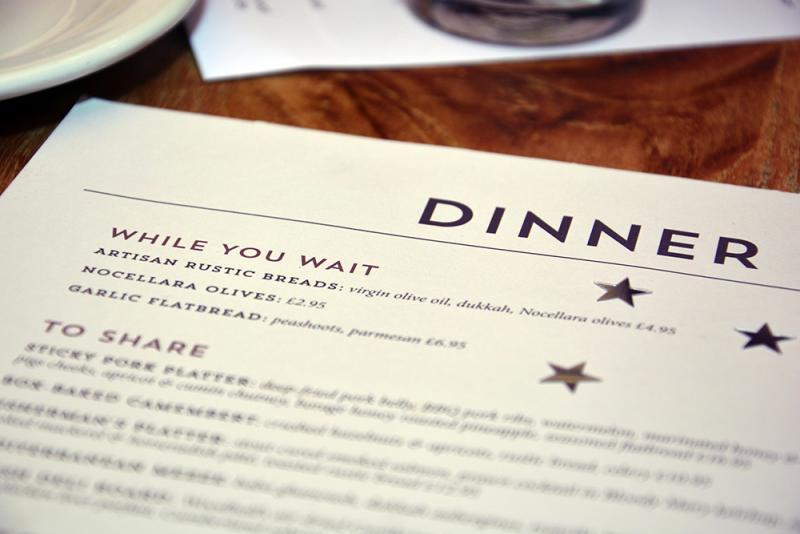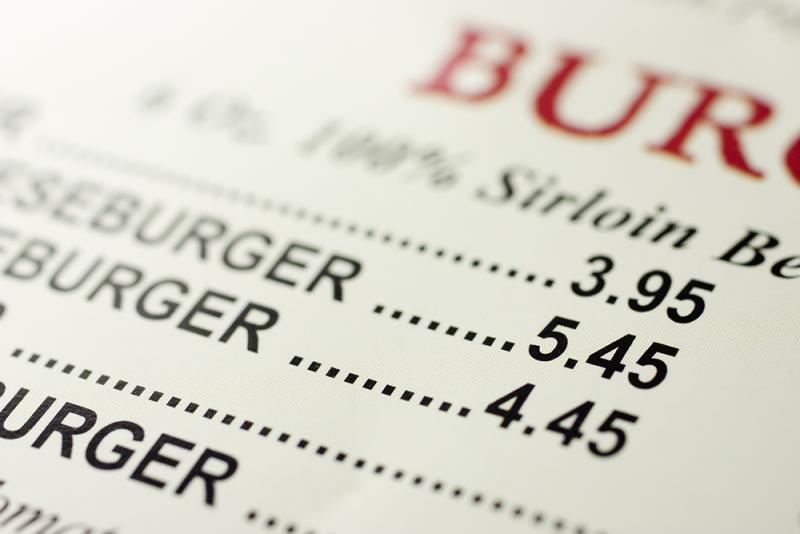Welcome to part three of the menu development series. In part one of this menu development series, we went over the 14 fundamental elements of developing an iconic menu; from the ideation stage through to the final testing and sale of your items. In part two, we discussed how to present a menu that’s created for different mediums like print, online ordering, and digital.
In this third installment, we'll cover simplifying your menu design for improved execution.
We all know that your menu is a monumental element of your brands’ short-term and long-term financial health. Over the years, however, menu development and day-to-day operations have seemed to become more complex – but does it really need to be that difficult?
When you envision a simple business model, think about a child’s lemonade stand. It has one or two products, often one price, and little-to-no overhead costs. The more simplified you can design your bar and restaurant business to be, the easier it is going to be to manage.
Obviously, things are more complex than that of a lemonade stand, but the mindset towards the development of simple business systems or processes can be designed to control your very complex business model. Simplification involves fewer moving parts and the ability to be significantly more productive, which requires less labor paired with improved execution. In summary: doing more with less.
How can you simplify your menu development and menu execution process?
Ideal Number of Menu Items
Not long ago we worked with a bar & grill concept that was struggling to make ends meet. As part of the assessment, we of course reviewed their F&B menu. In total, we learned that they had 58 kitchen items on their menu plus a number of sides.
After realigning their brand, identifying their target customer profile, reviewing their sales and menu mix reports, and analyzing their bar and kitchen layout, this menu was reduced down to just 24 items.
We eliminated 58% of their current menu. The results: controlled F&B costs, increased labor productivity, less food waste opportunities, simplified vendor ordering, improved staff training, and a consistent product that created a memorable guest experience along with an increase in both revenue and profits.
More recently, it was my mother’s birthday, and we visited a restaurant in her local town. It was a Mexican branded restaurant that had a very large menu with items that did not fit within the framework of a Mexican concept. My mother’s all-time favorite item is English fish & chips, which they offered and she naturally ordered since she wanted her favorite on her birthday. Unfortunately, it did not meet her expectations in comparison to other fish & chips she’s had elsewhere. I asked her after what she expected by ordering English style fish & chips from a Mexican restaurant?
The key point here is that you can have a successful bar and restaurant serving multiple day-parts with a menu of just 12 (our ideal number), or at most, 25 menu items. Trying to be everything to everyone is what creates complexity. You can simplify your menu by defining your concept and brand, finding your niche in the market, and executing quality over quantity.
Bonus tip: If you’re just starting out with a new bar or restaurant, simplified, small, and targeted menus also provide you with the ability to maximize a smaller real estate foot-print, which in turn lowers your start-up capital requirements.
Your Menu Categories
We’ve all seen them time and time again – menus with Appetizers, Entrees, Sides, Desserts, and Beverages. These headings on menus became the standard over the years, but let’s be honest – that’s boring. When a guest is reviewing your menu, get it into their mind that your team along with your food and beverage programming is creative. Developing this type of psychology within your menu will immediately heighten their expectations.
How about categories with two to three menu items under each, such as ‘While You Wait’ -or- ‘Prepared for You’ -or- ‘Something Sweet’ -or- ‘Between the Bread’ -or- ‘From The Fields’ -or- ‘The Butcher Shop’ – you get the idea.
There are many creative options here that you and your team can come up with. These types of headings or categories are what will help tell the story of your menu items and help simplify the overall ordering process. They will help create additional value, curiosity, and most importantly – differentiation.

General Pricing Strategies
Now that you’ve simplified your offerings and added creative flair to your menu, you need to set a price for each item. Before you can put a price on your menu items, however, you need to answer a few important questions first.
1. What are your prime costs? This is a simple combination consisting of your cost of goods and your labor costs.
2. What are your recipe costs? Use recipe cards for both your kitchen and your bar to develop detailed ingredient lists for each food and beverage item created.
3. What are your plating and pouring costs? Using your recipe cards (yes - there is technology available for this too) you can determine the total dollar figure attributed to the recipe cost and intended portion.
4. What are your theoretical F&B costs? Understanding your plating & pour costs, you can then determine your required cost and production percentages that will help make you profitable.
5. What should you sell it for? Take your plate or pour cost and divide it by your targeted food & beverage cost to get a targeted menu price for your item. For example, your double-stacked smash-burger that’s loaded with fresh toppings costs $3.88 to produce. To be profitable, you determined that you need to maintain a 28% cost structure, therefore you need to sell this item for $13.86 or $14.
To win in this business, you have to know your numbers. Sometimes when we do a seminar or we walk into a restaurant, we will ask restaurateurs what their food or pour costs are, and eight out of 10 claim that they are either not sure or claim that they are way too high.

Calculating individual menu item costs is a painstaking exercise, but it’s important to do it on a regular basis and to do it correctly. There is zero excuse to not know your costs, down to the penny, with all of the available technology on the market today. On top of the available technology, how can you make it a more simplified process? By keeping your menu small and targeted.
How to Incorporate Limited Time Offers
Now that your core menu is created, simplified, targeted, and precisely priced, you can add periodic excitement to your program by introducing limited-time offers.
Limited-time offers, sometimes referred to as LTOs, are promotional offers that run for a clearly defined period, often one week or one month. This type of "promotional offer" is not to be confused with "discounting." The best use of an LTO is by creating a menu item that is not always available. This again will help showcase your brands creativity and differentiate you from the competition.
The program that we have found to work time and time again that I would love to share with you is to have an internal competition within your operations.
Step One: Have individuals on your kitchen team (a food LTO) and bar team (a beverage LTO) create a unique menu item.
Step Two: Have a voting contest that could be internal, or even better, on your social media channels. The winning food and/or beverage item is then featured on your website, social media channels, in-store marketing, and more for 30 days as a "limited time offer."
Step Three: The "creator" of the menu item is then given a monetary bonus for each item sold during that designated time period, such as a percentage of sales from that item, which can be tracked through your POS.
The benefits:
- A creative and rewarding exercise for your team each month.
- New content plus community engagement on your digital and social channels
- If the item performs well during the LTO, the next time you engineer your menu, it could replace an item that was underperforming.
As always, follow the 14 fundamental elements of developing an iconic menu from ideation stage through to the final testing for your limited time offers to ensure it aligns with your day-to-day operations and doesn’t disappoint or cause complexity.
In the next part of this menu development series, we’re going to walk through how to scale your menu past one location, how to cater to different demographics in different markets, and how to adjust your menu pricing for different markets.
Are you registered for our Crave and Crave on the Menu newsletters? Sign up today!
Plan to Attend or Participate in the 2024 Bar & Restaurant Expo, March 18-20, 2024
To learn about the latest trends, issues and hot topics, and to experience and taste the best products within the bar, restaurant and hospitality industry, plan to attend Bar & Restaurant Expo 2024 in Las Vegas. Visit BarandRestaurantExpo.com.
To book your sponsorship or exhibit space at the 2024 Bar & Restaurant Expo, contact:
Veronica Gonnello (for companies A to G) e: [email protected] p: 212-895-8244
Tim Schultz (for companies H to Q) e: [email protected] p: 917-258-8589
Fadi Alsayegh (for companies R to Z) e: [email protected] p: 917-258-5174
Also, be sure to follow Bar & Restaurant on Facebook and Instagram for all the latest industry news and trends.
